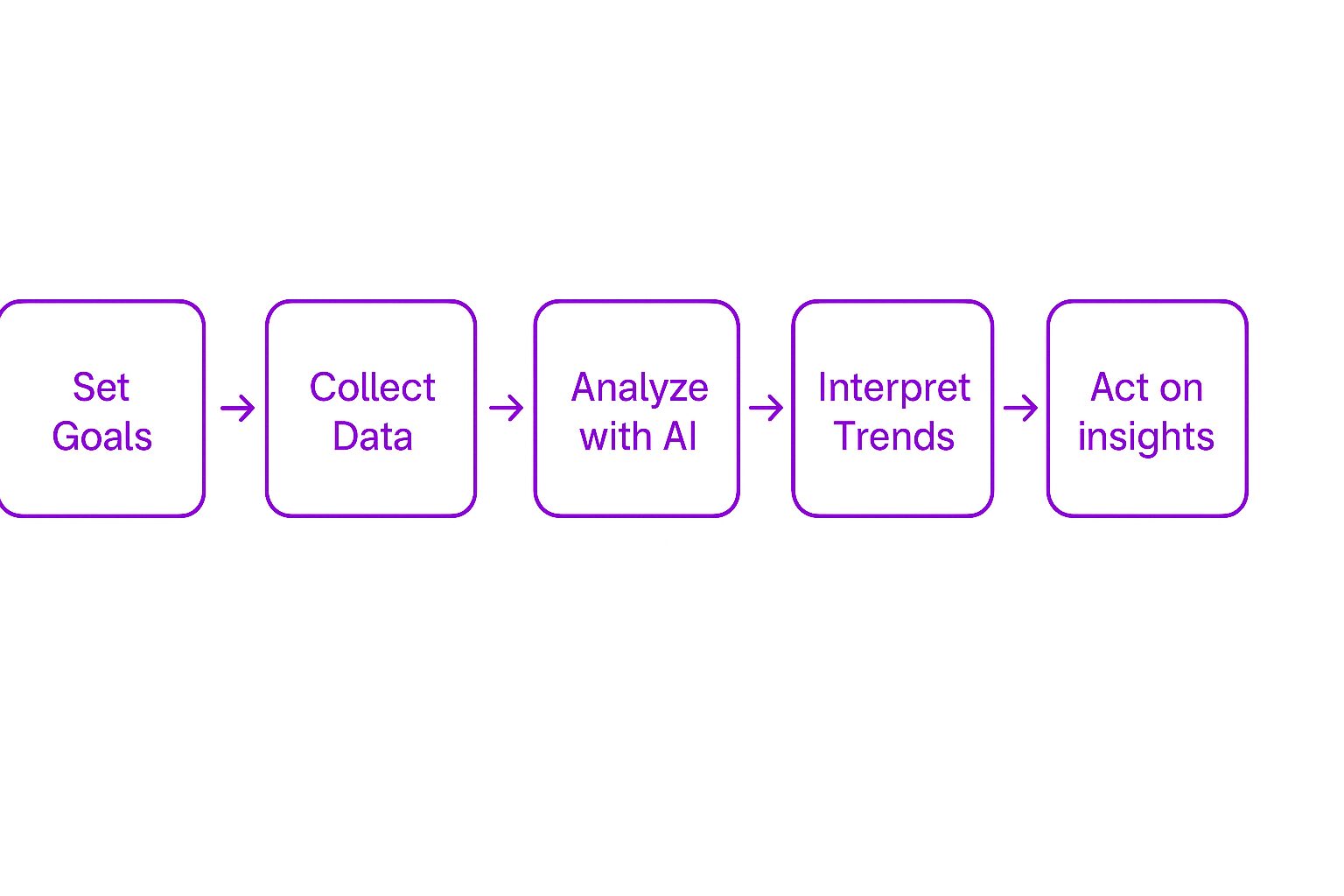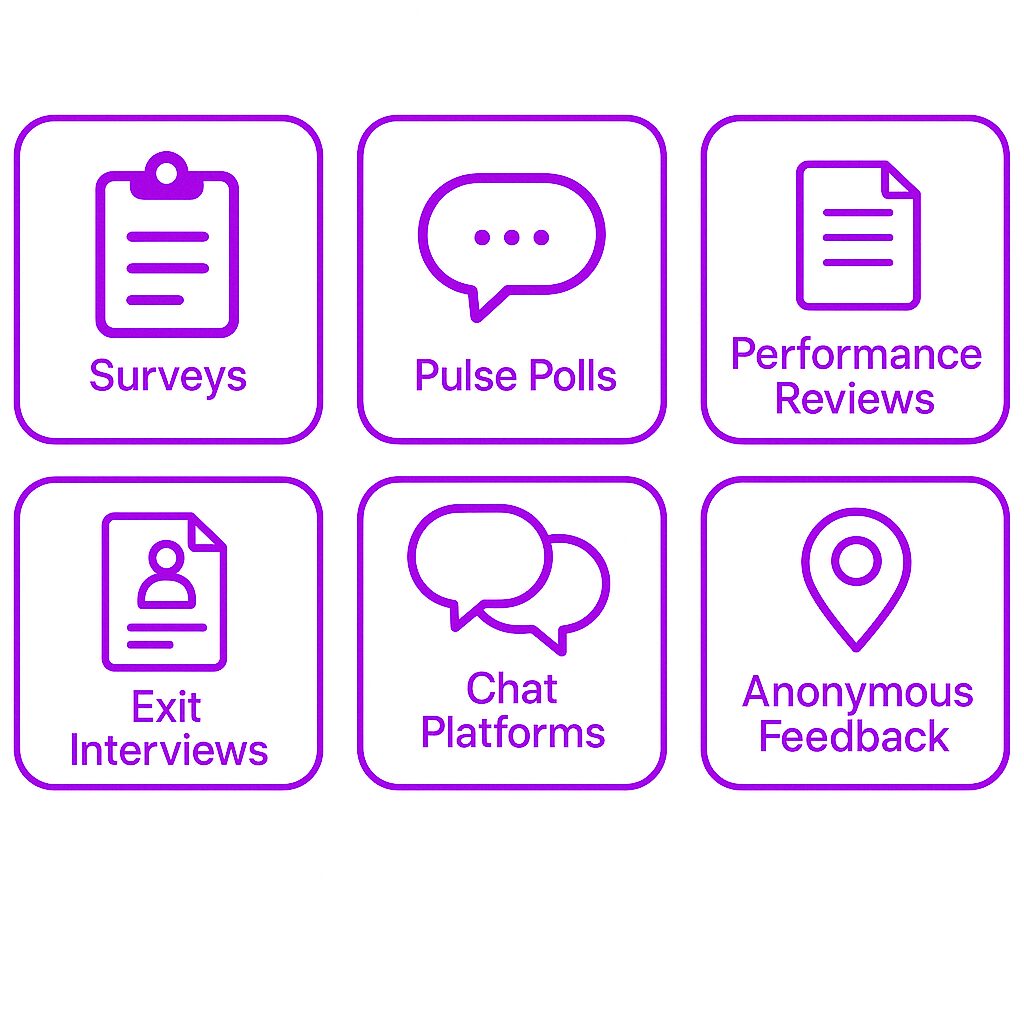What Is Employee Sentiment Analysis?
Employee sentiment analysis is the process of assessing how employees feel about their workplace, job roles, and organizational culture. It involves collecting and analyzing feedback to determine overall morale, engagement, and satisfaction levels.
Companies use employee sentiment analysis to identify trends, address concerns, and make data-driven decisions to improve workplace culture. This process is often powered by natural language processing (NLP) and artificial intelligence (AI) tools, which scan employee feedback from surveys, internal communication platforms, and performance reviews.
How Employee Sentiment Analysis Works
Organizations measure sentiment by analyzing structured and unstructured data from employees. Structured data comes from direct responses to surveys and rating scales, while unstructured data includes written feedback, emails, and chat messages.
Technology plays a major role in sentiment analysis. AI-powered tools scan text data for positive, negative, or neutral emotions, helping HR teams understand what employees are experiencing in real-time.
Key Aspects of Employee Sentiment Analysis
Brand Perception
Employees’ opinions about a company’s mission, leadership, and public reputation influence workplace sentiment. Positive brand perception improves loyalty, while negative views can lead to disengagement.
Workplace Experience
Daily interactions, team dynamics, and leadership effectiveness impact employee sentiment. Analyzing feedback on workplace experience helps companies improve collaboration and overall satisfaction.
Recognition & Rewards
Employees who feel recognized are more likely to stay engaged. Sentiment analysis helps determine if employees feel valued and if current recognition programs are effective.
Learning & Development
Opportunities for career growth influence workplace sentiment. Companies that prioritize professional development often see higher retention and job satisfaction.
Why Employee Sentiment Analysis Matters
Employee sentiment analysis helps businesses understand what motivates or demotivates their workforce. It allows leadership to respond proactively rather than reactively. By monitoring sentiment, companies can create strategies to reduce turnover, improve productivity, and foster a healthier work environment.
Companies that invest in sentiment analysis see improvements in engagement, collaboration, and overall job performance. Employees feel heard, and leadership gains insights to shape policies that support a positive work culture.
How to Conduct Employee Sentiment Analysis
Setting Clear Goals
Companies must first define what they want to measure. Common goals include understanding job satisfaction, improving team dynamics, and identifying potential burnout risks.
Choosing Data Sources
Sentiment analysis can be conducted using various sources:
-
Surveys and pulse polls
-
Anonymous feedback platforms
-
Performance reviews
-
Internal messaging platforms
-
Exit interviews
Implementing AI & NLP Tools
Advanced sentiment analysis tools scan text data and categorize feedback as positive, neutral, or negative. Some systems assign sentiment scores to help HR teams track trends over time.
Regular Feedback Collection
Instead of relying on annual surveys, companies should collect feedback continuously. This allows them to detect and address workplace issues in real time.
Taking Action Based on Insights
Once sentiment is analyzed, leadership must act on the findings. Sharing results with employees and implementing necessary changes builds trust and encourages future participation.
Business Outcomes of Employee Sentiment Analysis
Productivity
When employees feel supported and valued, their performance improves. High morale leads to greater efficiency and better collaboration.
Employee Retention
By identifying dissatisfaction early, companies can take steps to retain employees. Sentiment analysis helps pinpoint areas where improvements can prevent turnover.
Workplace Culture
Companies that prioritize employee feedback create cultures of transparency and trust. Sentiment analysis ensures that leadership stays connected with employee needs.
Diversity & Inclusion
Sentiment analysis helps organizations measure how inclusive their workplace is. If certain groups report lower sentiment scores, leadership can address potential biases or gaps in support.
Methods to Measure Employee Sentiment
Surveys and Polls
Frequent, short-form surveys provide direct insights into employee sentiment. These can be pulse surveys, annual engagement surveys, or topic-specific feedback forms.
Social Media Listening
Some companies analyze employee sentiment based on social media activity. This includes monitoring public reviews on job sites and internal employee discussion forums.
Employee Net Promoter Score (eNPS)
This measures how likely employees are to recommend their workplace. A high eNPS indicates strong employee satisfaction and loyalty.
Focus Groups
Small-group discussions provide qualitative insights into employee experiences and concerns.
AI-Based Sentiment Tools
Automated systems process large amounts of text data to detect sentiment trends. These tools help companies analyze thousands of feedback points efficiently.
Benefits and Challenges of Employee Sentiment Analysis
Benefits
-
Early Detection of Problems: Helps companies identify dissatisfaction before it leads to turnover.
-
Improved Communication: Creates open dialogue between employees and leadership.
-
Data-Driven Decision-Making: Provides factual insights to improve policies and work culture.
-
Better Employer Branding: Companies that act on employee feedback develop stronger reputations.
Challenges
-
Accuracy of AI Models: Sentiment analysis tools may misinterpret sarcasm, humor, or cultural nuances.
-
Privacy Concerns: Employees may feel uncomfortable with data collection practices.
-
Need for Continuous Follow-Up: One-time sentiment checks are not enough; companies must track changes over time.
-
Potential Bias in Interpretation: If not analyzed correctly, sentiment data may reinforce existing biases instead of resolving them.
Best Practices for Employee Sentiment Analysis
Ensure Anonymity
Anonymous feedback allows employees to be honest without fear of retaliation. Companies should reassure employees that their input is confidential.
Use Multiple Data Sources
Relying on just one type of sentiment analysis can lead to an incomplete picture. Combining surveys, feedback tools, and AI analysis improves accuracy.
Continuously Improve Analysis Methods
AI models and survey questions should evolve based on real-world results. Regular updates help companies maintain accuracy and relevance.
Communicate Results and Actions
Employees should know how their feedback is being used. Sharing key findings and company responses builds trust and encourages future participation.
Related Concepts
Employee Experience
The overall journey an employee has within an organization, including interactions, challenges, and opportunities.
Diversity & Inclusion Metrics
Sentiment analysis can reveal whether employees from diverse backgrounds feel included and supported.
Workplace Well-Being
Organizations use sentiment analysis to track how employees feel about stress levels, mental health support, and work-life balance.
Real-World Applications of Sentiment Analysis
Tech Companies and Remote Work
Many tech firms use sentiment analysis to monitor employee engagement in remote work settings. This helps them adjust policies to improve work-life balance.
Retail and Customer Service Industries
Retail companies use sentiment analysis to understand how frontline employees feel about customer interactions and workplace conditions.
Healthcare and High-Stress Industries
Hospitals and healthcare organizations analyze sentiment to assess burnout risks and improve job satisfaction among medical professionals.
Final Thoughts
Employee sentiment analysis helps organizations stay connected to their workforce. By continuously measuring and acting on employee feedback, companies create positive work environments that support engagement, retention, and overall job satisfaction.







